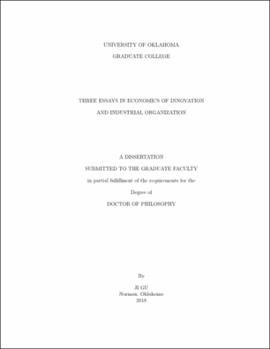| dc.description.abstract | My dissertation studies economics of innovation and industrial organization. In the first chapter, I analyze the effect of geographic proximity on knowledge flows by estimating the impact of travel time on patent citation frequency between US Metropolitan Statistical Areas (MSA) for the period of 1976 to 2006. Using a gravity model, I show that on average a 1% reduction in travel time leads to a 0.17% increase in patent citations. The second chapter introduces two modifications to standard models of media markets with advertisers on one side and readers/viewers on the other. In the first modification, advertisers make strategic choices on the quality of their ads which affect the utility of readers/viewers joining the same platform. I show that this feature of strategic agents leads to qualitatively different econometric specifications for the estimation of group externality parameters. Relative to benchmark case of passive agents, prices on both sides are lower under strategic agents, benefiting the agents at the cost of platforms. In the other modification, I introduce independent retailers between platforms and readers/viewers. Our results suggest that this modification has no impact on estimating the group externality parameters. However, equilibrium price on either side depends on group externality parameters at both sides. The third chapter studies the impacts of innovations from upstream and downstream industries. Using input-output account and patent citation data, I identify vertical relations between industries in both intermediate good markets and the patent system. My results show that in intermediate good markets, a 1% increase in research and development (R&D) expenditures in upstream industries will decrease a downstream firm's R&D expenditure by 0.729%, while a 1% increase in R&D of the downstream will reduce an upstream firm's market value by 0.907%. Meanwhile, in the patent system, the upstream to downstream R&D and market value elasticities are estimated to be 0.983 and 1.053. | en_US |
